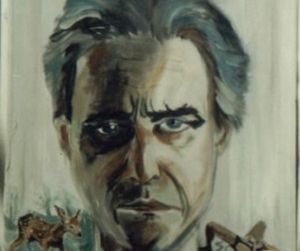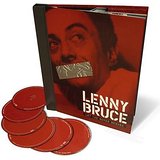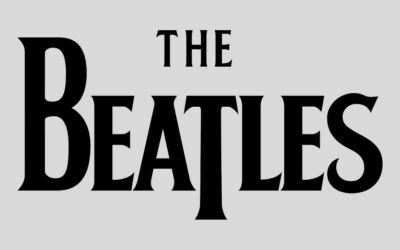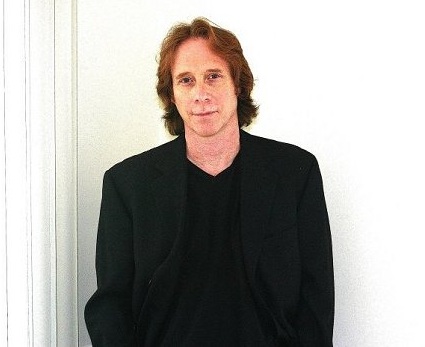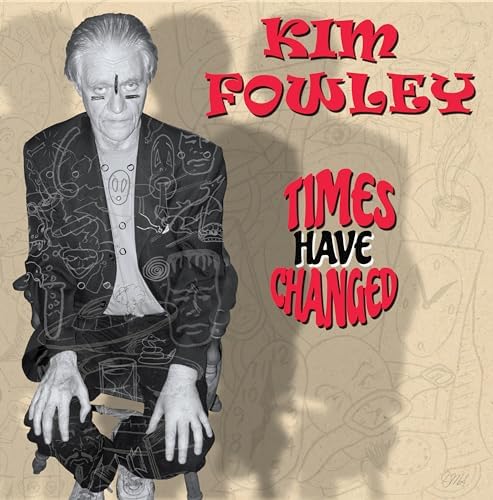
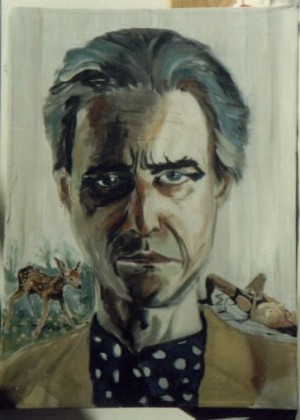
Kim Fowley is a DJ on Little Steven’s Underground Garage channel (25) Sirius/XM satellite radio network. He’s heard every Saturday between 9:00 a.m. to 1:00 p.m. (PST). Sirius/XM channel 25. His shift is then re-broadcast on Sundays between midnight and 4 in the mornings PST.
Fowley’s musical band creation The Runaways are the subject of a full length feature movie scheduled for 2010 release starring Kristen Stewart of “Twilight” fame as Joan Jett and Dakota Fanning as Cherie Curie. The movie is partially based on Curie’s book” Neon Angels.”
Actor Michael Shannon, an Oscar nominee for “Revolutionary Road” portrays Fowley in this endeavor directed by Floria Sigismondi, known for her music video for Marilyn Manson, “The Beautiful People,” in addition to work with White Stripes, David Bowie, and The Cure.
Kim Fowley’s legacy is further evidenced with three tracks as producer and artist in the upcoming Rhino/WMG Records 4 CD box set, “Where The Action Is! Nuggets Los Angeles 1965-1968,” due in September from the label.
Fowley is cited and quoted in the “Canyon of Dreams: The Magic and the Music of Laurel Canyon” coffee table book published in October by Sterling/Barnes and Noble
Norton Records has scheduled a collection of Fowley solo recordings and productions from the 1960s, “One Man’s Garbage Another Man’s Gold.” It will be issued on double vinyl and as a single CD. During November Fowley has scheduled an East Coast tour to promote the anthology within the five boroughs of New York and New Jersey.
For 2009 and 2010 Fowley is planning ten movies and 3 albums for retail release. He’s also been interviewed for five music books, including John Einarson’s biography on Arthur Lee and Love. He’s also been lensed for a documentary on The Seeds.
Q: You are now a DJ on Little Steven’s Underground Garage channel on the Sirius/XM Satellite Radio Network. You had been a DJ previously on both the AM radio and FM radio dial.
A: When I was in the Air Force National Guard in Idaho in 1960 I was on KGEM-AM. 1520 on the AM dial broadcasting from Howdy Partner Drive In.
Q: Talk to me about FM radio in 1966-1970. You were on the air then briefly.
A: The standard of music was amazing and everyone was under 30 years of age.
FM radio became more prominent with play lists broadcasting albums instead of singles that AM stations programmed. There was a window, through 1967, where Peanut Butter Conspiracy was on play lists with the Beatles. But, there were so many bands and the brain can not comprehend and absorb it all, and if you were 16 years old then, you didn’t have money to buy thousands of records ever week. So, a lot of people just got lost in the shuffle that were wonderful.
“Radio formats, until the beginning of FM radio would play anything good. Then FM radio came along and messed it up. The same way ‘Downbeat’ magazine messed up jazz. The critics showed up. And, a bit later in 1968, ‘Rolling Stone’ magazine showed up and
all of a sudden had to put an intellectual meaning and enforce a culture on something that was supposed to be wild, crazy, fun and illuminating.
Q: You had a very short DJ stint on KPPC-FM, the Pasadena, Ca.-based radio station in 1967.
A: For one 72 hour period over a weekend but got axed because I played an Otis Redding campaign song for 1968 Democratic Presidential candidate Hubert Humphrey. It was the ‘Hucklebuck’ with Hubert Humphrey lyrics. I also programmed Country Joe and The Fish’s ‘Fixing To Die Rag’ right afterwards, back to back. And they fired me on the spot. I then gave the address of the radio station over the airwaves, and 1,000 kids showed up in the parking lot to party and support me.
Q: Now you are heard on Sirius Satellite Radio Channel for Little Steven’s Underground Garage.
A: I’m a radio actor on Little Steven’s Underground Garage every Saturday between 9:00 a.m. to 1:00 p.m. (PST). Sirius/XM channel 25. And then on Sundays between midnight and 4 in the mornings PST.
“Little Steven is my Alan Freed, Bill Drake and Bill Gavin. It’s his format and I’m a guest on his format. Standing between me and him is Kid Leo, a pioneer of rock ‘n’ roll radio like my late boss, Alan Freed. I was a food runner for Alan in 1959 in L.A. when he was on the air locally. In 2000 I was on the ‘Behind the Music’ Alan Freed episode on VH-1 Television as an interview subject. Kid Leo carries the tradition.
Q: You provide anecdotes and a back story not gleaned from the intenet. You were there originally when the music was birthed and now inform your listeners to the music and subject specific data about songs on your program.
A: Little Steven has a great play list that is fine tuned by Kid Leo and I operate with their play list and implement my own instrumentals out of their play list I find the songs where I can do my radio actor personna the best.
“The Satellite radio audience are kids starting bands and kids who were not alive for the golden days of rock ‘n’ roll. They are like sponges absorbing everything the same way the early Lennon and McCartney and Brian Wilson and Jagger/Richard digested music that came before them in Blues, Jazz, or Rock or Pop in their formative years as listeners.
“I get a lot of their emails. The next group are people who lived through it and want to live through it again. They are the people who never stopped living through it and some of them are older than I am.
“There are rock and roll couples, rock and roll lonely hearts. We have people who look at rock and roll as a life style, not a music content. A lot of people drive cross-country and they travel and commute and listen to us. We have 18 million listeners in America because a lot of this on satellite boxes to be found in automobiles. They are manufactured in America. Then 20 million listeners through AOL around the world.
“It takes me 12 hours a week to read and answer emails I get from my listeners. They are in Greece, Australia, Italy, Russia, Eastern Europe, plus a lot of armed forces. My program deals with the listener. I am most concerned with the listener and his or her needs. From loneliness to dating to living. I have a bond with them.
Q: Why are you so comfortable on the radio?
A: Because I’m a natural born talker. I’m Irish. Irish people talk and Irish people write. Some of the show is on vinyl. I don’t care what it sounds like as long as it sounds good it can be on anything. I have a heartbeat every morning when I wake up. That’s the best thing I have going.
Q: People are paying money to hear radio by subscription? Should the airwaves be free?
A: Everything costs money. Nothing is free anywhere.
Q: You play some Beatles on your program. Why is their catalogue so potent and still commercial?
A: The Beatles on the radio had three part harmony. The Everly Brothers with Carole King and Gerry Goffin melodies. When I saw them I saw human male dolls for little girls to play with, and their hair, shoes, clothes, were unique. The whole thing was new. Even though it wasn’t new to a lot of people.
“In 1965 I was at Dick James Music office in England, the Beatles’ original music publishers via Northern Songs. Here come the four Beatles in suits with the neck ties and Brian Epstein their manager ran in and said, “Everybody stand up and applaud the boys.” And they walked in the door.
Q: Elton John and Bernie Taupin were staff writers for Dick James Music before Elton embarked on a solo music career. You knew about him just before he arrived in America and Hollywood in 1970 for his monumental Troubadour club engagement.
A: I was at a music festival in Sweden and Elton was playing piano with Blue Mink. It was on a Saturday night and the following Monday he left for Hollywood after Russ Regan signed him to Uni/MCA Records for America. Russ is a visionary. Elton said to me, ‘I remember you when you were on ‘Tops Of The Pops’ singing ‘They’re Coming To Take Me Away.’ I told him, ‘Pay attention to Danny Hutton when you come to town. He will steer you through L.A. and you will survive ‘cause of him.’
“Danny used to tout Elton and Three Dog Night covered ‘Lady Samantha’ and ‘Your Song’ when Elton and Bernie Taupin were staff writers with Dick James. We’re talking early 1969. Danny Hutton used to be my driver and I recorded him for Challenge and Victor Records. His mother was my landlady. And Danny was and is cool. He told me about Elton being this great artist before I went to Europe for that music festival.
“Danny and I were in a car together when we first heard the Beatles on the radio in the summer of 1963 when no one was paying attention. We were on our way to the beach. I said, ‘It’s The Everly Brothers with three-part harmonies. And that’s why it works.’
Q: You first met John Lennon in 1966 when you played him and Paul McCartney the acetate pressing of the Beach Boys’ “Pet Sounds” album in England.
A: Bruce Johnston of the Beach Boys was in London doing advance publicity for the LP and I was asked to bring the Who’s Keith Moon over who brought John and Paul to the hotel room. They were both very impressed by the recording, left the hotel and went into the studio the next day and did ‘Here, There and Everywhere’ for ‘Revolver.’ The both of them were able to digest and gauge the whole essence of ‘Pet Sounds’ in one listening.
“The music is more popular than ever because no one else has gotten close. There is nothing out there that is great in that category so they win until the next Beatles show up. Whoever they will be.
“My favorite Beatles’ album is the Vee-Jay album. My second one would be ‘Rubber Soul.’ I ran for food for Vee-Jay recording artist Dee Clark around the Watkins Hotel in L.A. The music on Vee-Jay was real.
“At a Hollywood party a decade ago I had a chat with Ringo Starr and he told me The Beatles cut a version of my song ‘Alley-Oop’ that I co-publish and that the tape allegedly is at Abbey Road. I produced the original hit recording with Gary Paxton on The Hollywood Argyles.
Q: Let’s discuss The Rolling Stones during 1964-1966. You play their records of that era.
A: There’s magic in the Stones, too. Keith had the great pulse. And Mick was the great derivative interpreter of the attitude and juke vibe. And those two guys had the great rhythm section with Watts and Wyman. The other guitar players were interchangeable.
Brian Jones was a friend of mine and the one I knew the best in the band. I met him at parties in California and saw him at RCA studios when the group was recording 1964-1966 in Hollywood. We talked once at The Action Club. His ex-girlfriend, Linda, who later married Donovan, was a friend of mine. I knew her in L.A. and Hollywood. We’d hang out together.
“Brian Jones was a lot like George Martin. He was a strategist musically. He was the best musician of the Stones, granted the rawness of the pulse came from Keith, and Mick did the vocal extension. Brian provided the taste, with Watts and Wyman. Brian was like Charlie Chaplin before him. Brian could pick up any instrument and play it immediately. He was a musicologist. He was a pretty boy with George Martin’s brain with stringed instruments. He probably was too smart and too gifted and it exploded. He couldn’t contain the greatness in a daily life level.
Q: Talk to me about the Rolling Stones circa 1967 as well as the 1968 and ’69 period which is also on the playlist.
A: “Summer of Love 1967, Brian (Jones) might have been the musician of the period. His work on “Satanic,” coloring, not songwriting, along with his wardrobe. Charlie Watts wished he was Charlie Yardbird Parker’s drummer. Bill Wyman turned out to be the Valentino of the group. Keith the soul of the band and the reason they’re still there. Keith plays the way Steve Cropper and Mars Bonfire play. He plays rhythm guitar on a Chess Records and Buddy Guy level. Keith understands what to leave out. Mick Jagger is the business glue that holds it together now but at the time earlier, was a great front man, and still is, and a great navigator. And was able to get the little girls going between art and commerce.
Q: Andrew Loog Oldham, former manager, producer and publisher of The Rolling Stones, is now an author, his revealing autobiographies “Stoned” and “2Stoned” are being developed by HBO cable channel for a memoir-driven series Andrew and Lou Adler are executive producing with writer Wesley Strick. Andrew also has a shift on Little Steven’s Sirius/XM channel. He follows you on Saturdays on the West Coast and is heard daily all through the week on replay.
A: Andrew Loog Oldham is brilliant. Like Robert Plant, he was a record collector on top of everything around him. After he worked with the Stones his Immediate Records was very indicative for the time period. ALO was an eccentric guy setting up a heaven and a consistency for eccentric artists who did cross over. And it was innovative. The Nice, Small Faces. P.P. Arnold. We play them on the channel. Andrew wore ‘Suddenly Last Summer’ white suits in 1964 and ’65. When he walked into a room with Marianne Faithfull the room stopped. He was 20 going on 50. I saw him at SXSW in Austin Texas a few years ago.
“Andrew Loog Oldham in 1966 and way through the 1967 Summer Of Love owes a big debt of gratitude to Lou Adler, who earlier gave him access to the Laurel Canyon and Sunset Blvd. culture. I know they met in 1964 formally in Santa Monica at ‘The T.A.M.I. Show’ taping. Adler had the connections to Guy Webster who took the photos in the Stones’ ‘High Tide And Green Grass’ package. In 1967, ‘Flowers’ by the Stones was released that Adler is acknowledged in the jacket credits, along with Webster, and Tom Wilkes, who Andrew also met during the planning of the 1967 Monterey International Pop Festival.
“So, Hollywood, circa 1967 informed not only the music the Stones recorded 1964-1966, and perhaps a bit in 1967, but certainly product artwork of the period. Andrew was able to give Mick and Keith a California schtick as well. Which they incorporated as they were evolving. Andrew realized they could only recycle Excello Records and Chess Records so long.
Q: You worked with influential record producer Tom Wilson and knew Eric Burden. You spin lots of Animals on your radio show.
A: In 1966 Tom Wilson produced the Mothers of Invention debut album and I was on it. I sang on ‘Help I’m A Rock.’ I’m also on the unreleased live Mothers of Invention album from the Whisky A Go Go.
“Wilson in 1966 started working with Eric Burdon through 1967. So the Summer of Love didn’t expose me to Eric Burden, in his second Animal’s phase. Burden, I believe got sidetracked by psychedelic music. Because he really wanted to be black. I was his ‘marriage counselor guy’ when he had a black girlfriend from a white neighborhood in California who he wanted to marry, and I had to explain to her that inside this Newcastle guy was a black man. They didn’t get married. A Beyonce look-alike in 1966.
In my current Sirius/XM Satellite radio show I play a lot of Eric Burdon from 1967, like ‘Monterey.’ He’s a great singer. Nice guy and really good on stage.
Q: You also spin some Stax label records on your shift. Andrew Loog Oldham suggested Otis Redding to perform at the Monterey International Pop Festival in June of 1967.
A: The Stax tour of 1967 in England and Europe galvanized those people because black people invented rock ‘n’ roll. Even the white people playing with black people had black souls. And blues, jazz, country, gospel and various combinations equals rock ‘n’ roll. Remember: Rock and roll is a by-product of a four way sex orgy between blues, jazz, gospel and some folk/country.
“Otis Redding was like Bono. His wife Zelma told me Otis made up spontaneous songs. Booker T. Jones was like Keith Richards and Leon Russell: He knew what to leave out. Black music is what you leave out. You can catch your listener in the holes that you allow and everyone falls into, like a warm womb. But there was some white, psych music of 1967, Small Faces, Traffic especially, which did this. Producer Guy Stevens was very important in the music heard in clubs in 1967. He put out my record ‘The Trip’ in 1966 for Island Records. He was a black music afficiando and went with psychedelic music as a marketing ploy. His passion was black music.
Q: Yourself, Andrew Loog Oldham and Little Steven also acknowledge the 1967 Summer of Love era and track records from that year. Bill Kelly, too.
A: Psychedelic and R&B music co-existed in L.A. 1966-1969, and especially Hollywood.
The Summer of Love 1967 was one long big sleep of free love, naked women, drugs and good times. No too much drink. And the love-ins where I officiated were the epicenter of all the above. We had 25-30 bands, along with poets weekly. There was a sense of community and it was new. Now in it seems like another planet from a million years ago. Summer of Love contributions, from dance to visual artists from the area are vastly underrated when you look at the documentation the magazines and media have provided, but the music made a deep impression. The Turtles and Association made great records in 1967.
“I’ll play The Seeds, Love, Music Machine, Leaves, Doors. I was the last producer of the Seeds. Sky Saxon invented ‘Flower Power’ in America, and he had a Brit, Lord Timothy Hudson, as his manager, that hustled and did a good job of beating the drums for The Seeds. I’ve just been interviewed for a documentary on The Seeds and for a book on Arthur Lee and Love.
“The band Love was unique because they were people who went beyond black stereotype for their influences and inspirations. They weren’t an R&B band. They didn’t play the Apollo in New York or the Regal Theater in Chicago. They didn’t hang out with DJ’s Huggy Boy or Godfrey. These guys had white girl friends and Porches on Sunset Blvd.
“Donovan’s music had spirituality. Donovan made impact. Parts of his ‘Sunshine Superman’ album were cut in Hollywood a good year or so before it was released, and it was a soundtrack album of Summer of Love 1967. Joe Foster’s record label in the UK Rev-Ola has issued a lot of other great 1967, ’68 albums cut in Hollywood like The Cake.
Q: Talk to me about Jimi Hendrix. I know you met him in 1966.
A: Yes. I produced the Soft Machine previously in England, who like Jimi Hendrix, were managed by Michael Jeffreys, who also had the Animals at the time. In 1966 I was his neighbor in England in Bayswater. In our first 45 minute meeting in the hotel lobby, I was literally the first person he met when he got off the plane from New York, we talked music, and he said he wanted to play science-fiction rock ‘roll.
“In late 1966 or early ’67, I was the one who told Warner/Reprise label head Mo Ostin about Jimi and that it would be a good idea to sign Hendrix to the label for North America. An hour later Brian Jones and Jack Nitzsche visited Mo n Burbank and they confirmed what I said. We all knew that Jimi would be great acquisition for the label in America.
“I knew Jimi would take over in summer 1967 in America because he had chitlin circuit experience, and he knew how to work a crowd in the chicken wire chitlin’ world. He was an experienced performer and everyone else were suburban white kids trying to be English or black. Jimi liked the fact that I knew about the Spanish Castle venue in the Seattle area. I was the promo man for ‘Tall Cool One’ by the Wailers from his neighborhood, since I was tall and cool. I was a producer of L.A. based Richard Berry, who wrote ‘Louie, Louie,’ and also wrote ‘Half Love Will Travel’ that were regional hits, and Jimi knew them.
Q: You once had a chat up with Jimi and Janis Joplin around the time of the Monterey International Pop Festival.
A: We bonded in trivia over Gail Harris, a singer. I said Jimi I knew she played the Spanish Castle. Gail was on Carlton Records. She had Janis Joplin’s voice and was good looking. She was like a sensual stewardess with a Janis voice. So, when he walked into that Hollywood party in June 1967,and saw Janis Joplin, I said, “Jimi, ‘She’s got a Gail Harris voice.’ ‘Really?’ And off they went…
“I was almost in Big Brother & The Holding Company. The band heard my record ‘The Trip,’ and thought I had the goods. But I wasn’t interested in living in San Francisco, which was damp and foggy. Chet Helms had brought Janis up from Venice, and she auditioned and got the job. She was tremendous. Janis was a chameleon who was a homely girl off stage but a goddess and a sensual animal on stage as soon as she opened her mouth and started prowling the stage. It was that beauty from within thing that made it happen for her. She spent a lot of time listening to Etta James, Bessie Smith and Big Mama Thorton.
“The music birthed at the Summer of Love endures. The Kaleidoscope used music from other cultures and centuries to illuminate the psychedelic midnight. There was even one recording they did, sometime in 1967, where world beat meets cosmic R&B on tape. Kaleidoscope cut with Larry Williams and Johnny ‘Guitar” Watson on ‘Nobody’ that Three Dog Night eventually covered and scored with. These are the sort of ‘experiments’ and events that emerged in and around the Summer of Love in Hollywood.
“The Doors, partially because John Densmore was a jazz drummer. You also had a jazz keyboardist and a jazz guitarist all playing the blues with a real great poet and actor fronting it. It was tremendous. It was theater. Jim Morrison was the best white in person performer. Better than Elvis. Better than Jagger. Because he did what Howlin’ Wolf and Lawrence Olivier did. He did it all at the same time. He did William Shakesphere and gut bucket together. And only PJ Proby rivaled him and David Bowie came in third.
“Jim could sing in pitch, he had the image and the poetry. He understood theater. Manzarek supplied a pulse, and Robby the guitarist is never given the credit what he brought to the table in 1967. The Doors were not a rock ‘n’ roll band but gave you a rock ‘n’ roll feeling. And the only band that did that was the original King Crimson. ‘Cause they weren’t a rock ‘n’ roll band, either, but when you heard “Court of the Crimson King,” and Pink Floyd ’67, they were the only bands who had some Wagner with a rock ‘n’ roll attitude.
“I loved Marty Balin in the Jefferson Airplane. He was the soul of the band. Examine the recordings they did over 1967, and the songs he wrote then. Country Joe and the Fish…They were tremendous live. He was a lot like Jim Morrison with an acoustic guitar. They almost could have been cousins. He had the similar control of an audience like Morrison had, only Joe did it on a folk level, banging on his ‘Woody Guthrie’ type guitar. I used to see the Chambers Brothers gig. They would tear up a place, and then Joe and his band would come in and blow them off.
Q: On your radio show you also incorporate new bands and current cool records along with the legacy of the Atlantic, Bang, Chess, Motown record labels and things like ‘The Lonely Surfer” by Jack Nitzsche.
A: I liked Jack Nitzsche. He was a great person and did excellent work. He used to do my lead sheets. Andrew and I play his records on the channel.
“Ahmet Ertegun once said, ‘You can only hope that you bump into a genius if you are starting a record label.’ Jerry Wexler was a nice guy and very talented.
“Bert Burns of Bang was a genius. I met him in Hollywood just before he died touring with Van Morrison. He came across as a combination of Robert Mitchum and Gene Vincent.
“Leonard Chess gave me time when I met him with Alan Freed. They were both impressed that I knew the Jewish dietary laws and I could nosh with them. They fed me once. I used to hang with (bandleader) Paul Gayten who did A&R for them in Hollywood. Marshall Chess is a nice guy.
“Willie Mitchell is a genius. I met him in Memphis. I love the Hi label and his stuff with Al Green. His club is the best sounding club I’ve ever been in.
Q: You also worked for Motown Records in 1960 and in 2009 on occasion play the label’s sounds on your program. As a promo man for the label in 1960 you schlepped around The Miracles’ “Way Over There” just before “Shop Around” was a smash.
A: In 1960, I had just co-produced and co-published “Alley Oop” by The Hollywood Argyles, a hit record, and was doing six months active duty in the Air Force National Guard, while waiting for my royalty statement from ‘Alley Oop” hitting the charts.
Q: You told me for “Goldmine” that you worked five records a week as a promo man after working for DJ Alan Freed and making $250.00 a week.
A: I got the Motown job after seeing their ad in ‘Cash Box.’ Berry Gordy’s sister Loucye took my phone call in Detroit that I placed from Happy’s Gas Station on Hollywood Boulevard, which I also used as an office. She was gracious, focused, heard my pitch about how I could help the label out in California.
“Berry then got on the telephone line. We talked about singer Marv Johnson who he just cut, and he quickly sent me a letter with a check. You could be on the street then, based out of a gas station, and get a label head on the phone in those days. The letter is on my website. www.kimfowley.net
Q: You also described Gordy to me in “Goldmine” as a “Pioneer, military strategist, musical genius and business icon. The role model of every record company that followed him. What he did, and the talented artists, musicians, songwriters and producers he helped bring forward, especially in the 1957-1960 pre-Martin Luther King, Jr. emerging from Selma Alabama period was heroic. An impossible fantasy.”
Talk to me about the cultural impact of Berry Gordy, Jr. and Motown Records.
A: Motown was based on the Detroit Auto assembly line. It’s based on the sound of building cars and fenders. It has to be loud because it’s a loud city. Motown started opening up as Norman Whitfield and others involved with the label began hearing FM underground progressive radio.
Q: What was his strength and mindset that nurtured and drove the label?
A: Berry Gordy was the Barack Obama of the late 1950s and early ‘60s in terms of having an executive reach and leadership in a white world and in an international world. The music of Motown is timeless.
Q: What goes through your mind as this movie is positioned for theatrical release in 2010. Your songs populate the film and your discoveries are now further documented in celluloid.
A: Better late than never. A lot of girls picked up musical instruments because of The Runaways. Some have gone into bands that have made chart recordings. I know the influence and impact. Girls and women have said ‘Thank you for giving girls a chance to prove that they can rock.’
“The Runaways was the first time that girls under age 18, female, played guitars, bass, drums, sometimes keyboard, sang and wrote or co-wrote their own material. That was the news. It was brand new.
“Because it was brand new and never done before, and because teenagers have no legal rights to anything, and girls and women have had a hard time all these years, and this was at the beginning of feminism movement, there was no sympathy for this concept anywhere.
“We were right. We were first. We bled like dogs. It was hard giving birth.
Q: You had a meeting with yourself, Joan Jett, actors Kristen Stewart and Michael Shannon recently in Woodland Hills, Ca. at a local Denny’s restaurant. Joan is the executive producer of this Runaways movie and she felt it was appropriate for everyone to meet and have some insights and research into your multi-tasking roles that informed the band’s 1975-1977 world.
A: I showed up to the meeting and dinner. I have 28 personalities and marched in. Kristen had been studying the real Joan Jett and Michael needed to see the real Kim Fowley in action. He wanted to see what that chemistry was. My parents were actors and I showed the stars some acting at the dinner table. I did some moves at the table. Some actors and actresses like Kristen Stewart are reserved and quiet off camera but on the screen they become something bigger: Magical and edgier.
“You see, all during the Runaways I had to create ‘New Kims’ all the time to deal with the group because they couldn’t concentrate. Michael Shannon went back to the movie set armed with information for his craft.
“I wasn’t invited to the set for any of the filming but at the last minute I picked up the phone and was invited that night to the movie wrap party at El Cid restaurant in Hollywood on Sunset Blvd. I showed up after I went and got a new ‘Marlon Brando’ haircut from his ‘Apocalypse Now’ movie, with a death row kind of veneer to it and makeup.
Originally Posted 2009.

